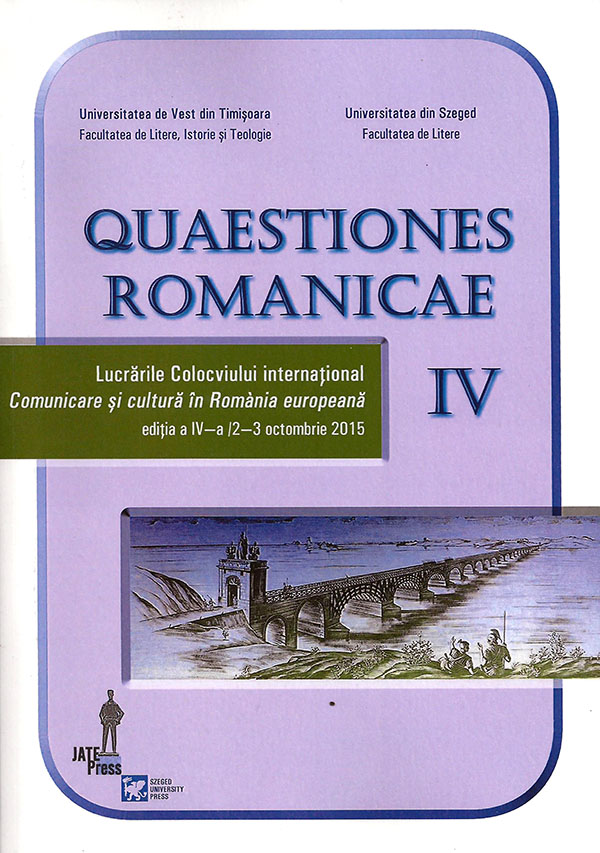¿Existe un patrón común en la producción literaria del exilio rumano? Sí: la matriz estilística
Abstract: (Is there a common patron of the literary production of the Romanian exile? Yes: the stylistic matrix). The Romanic space is an uprooted haven for countless selves that lived with the expectancy of “eternalizing themselves in the fugitive present”, as mentioned by the Spanish writer Miguel de Unamuno, himself uprooted from his native space at various points during his life. In sum, in the theories elaborated around the topic of exile, one can speak about its three fundamental subcategories: uprootedness, in which the individual keeps on living in the cultural space that he has lost without integrating himself into the present one; denial, a moment in which the individual denies his roots in order to immerse himself in the present; and hybrid identity, in which the individual hesitates between the two worlds. Starting from this classification, I will approach the issue at hand with the view that the Romanian exile does not clearly exhibit the second category, while, by contrast, the other two are prevalent. My strategy will consist of rebuilding Lucian Blaga’s thesis of the stylistic matrix with the aim of demonstrating, through an analysis of three poems by Busuioceanu, Horia and Uscătescu, that the Romanian exile is characterized by assuming the conviction of possessing a common Romanian stylistic source.
Keywords: exile, stylistic matrix, Busuioceanu, Horia, Uscătescu.
Resumen: El espacio románico es el ‘des-cielo’ de tantos seres que vivieron con la expectativa de ‘eternizarse en el presente fugitivo’ así como decía el escritor español, también desterrado, Miguel de Unamuno. En suma, en las teorías sobre el exilio se puede hablar de tres categorías fundamentales del destierro: el desarraigo, en la cual el individuo se mantiene viviendo en el espacio cultural perdido sin integrarse en el ahora; la negación, momento en el cual el individuo niega sus raíces para sumergirse en el presente y la identidad híbrida, en la cual el individuo vacila entre los dos mundos. A partir de esta clasificación abordaré la cuestión de por qué en el caso del exilio rumano no aparece con claridad la segunda categoría, y sí, por el contrario, las otras dos. Mi estrategia consistirá en reconstruir la tesis de la matriz estilística de Lucian Blaga para mostrar, mediante el análisis de tres poemas de Busuioceanu, Horia y Uscătescu, que el exilio rumano se caracteriza por asumir la convicción de poseer un manantial estilístico rumano común.
Palabras claves: exilio, matriz estilística, Busuioceanu, Horia, Uscătescu.
